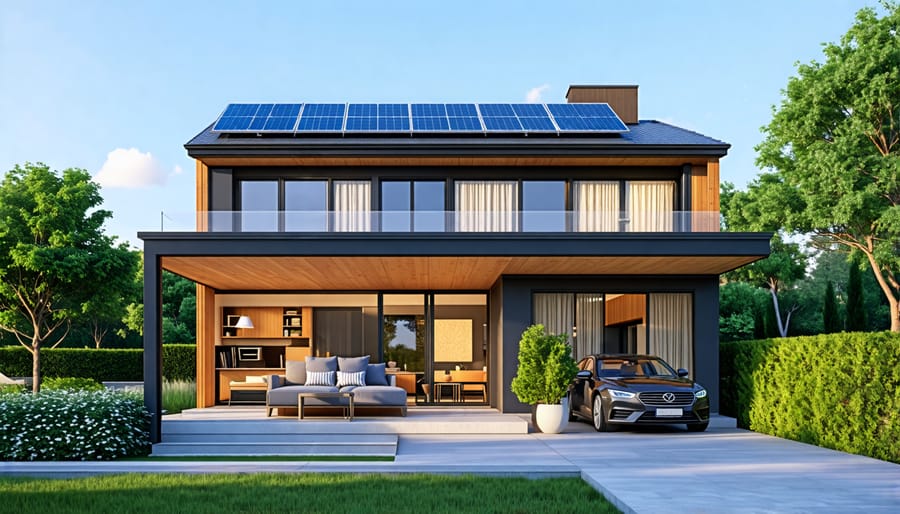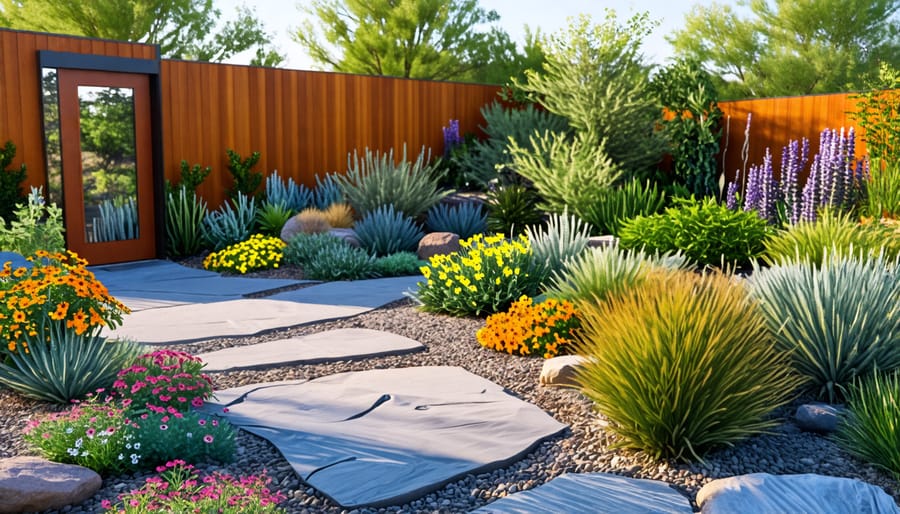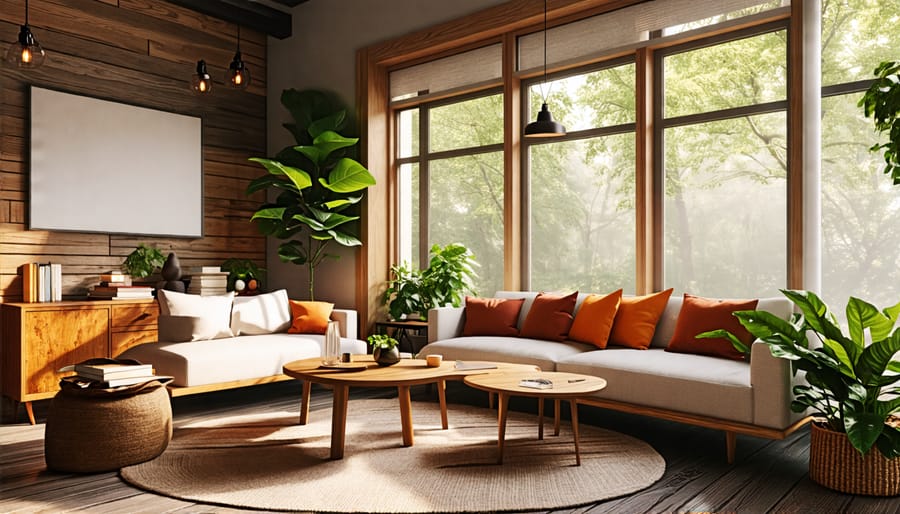Embrace sustainability in your home with eco-friendly practices that conserve resources and protect the planet. Install energy-efficient appliances, LED lighting, and smart thermostats to reduce your carbon footprint. Choose sustainable building materials like bamboo, cork, and reclaimed wood for flooring, cabinets, and furnishings. Implement water-saving features such as low-flow faucets, dual-flush toilets, and rainwater harvesting systems. Improve indoor air quality by using non-toxic paints, natural cleaning products, and houseplants that purify the air. By making these conscious choices, you can create a sustainable home that promotes health, comfort, and environmental responsibility.
Energy Efficiency
Insulation and Weatherization
Proper insulation and weatherization are essential for creating a sustainable home. By preventing heat loss in winter and heat gain in summer, you can significantly reduce your energy consumption and costs. Start by identifying and sealing air leaks around windows, doors, and other openings using weatherstripping or caulk. Next, ensure your home has adequate insulation in the walls, attic, and floors. Consider eco-friendly insulation materials like recycled denim, cellulose, or sheep’s wool. Installing double-paned windows and insulated doors can further enhance your home’s energy efficiency. Don’t forget to insulate your water heater and pipes to minimize heat loss. Lastly, regular HVAC maintenance, such as cleaning or replacing air filters, can optimize your system’s performance and improve indoor air quality. By implementing these insulation and weatherization techniques, you’ll create a more comfortable, energy-efficient, and sustainable living space while reducing your environmental impact.
Energy-Efficient Appliances
Energy-efficient appliances are a key component of a sustainable home. By choosing Energy Star certified appliances, you can significantly reduce your energy consumption and lower your utility bills. These appliances are designed to use less electricity and water while delivering the same or better performance as standard models. From refrigerators and dishwashers to washing machines and dryers, Energy Star certified options are available for nearly every appliance in your home. Not only do they help you save money in the long run, but they also contribute to a smaller carbon footprint. When shopping for new appliances, look for the Energy Star label to ensure you’re making a smart, eco-friendly choice that will benefit both your household and the environment.
Renewable Energy Systems
Incorporating renewable energy systems into your home is a key aspect of sustainable living. Solar panels harness the sun’s energy to generate electricity, reducing reliance on fossil fuels. They can be installed on your roof or in your yard, and many states offer incentives for making the switch. Geothermal heating taps into the earth’s consistent temperature to efficiently heat and cool your home. While the upfront costs may be higher, these systems can significantly lower your energy bills in the long run. Other options include small wind turbines and micro-hydropower systems, depending on your location. By embracing renewable energy, you’ll not only reduce your carbon footprint but also increase your home’s self-sufficiency and resilience in the face of power outages or grid instability.

Water Conservation
Low-Flow Fixtures
Low-flow fixtures are a simple and effective way to conserve water in your sustainable home. Replace older faucets with WaterSense-labeled models that use just 1.5 gallons per minute (GPM) compared to standard 2.2 GPM faucets. For showers, choose low-flow showerheads that deliver 1.75 GPM or less while still providing a satisfying experience. When it’s time to upgrade your toilet, opt for a high-efficiency model that uses 1.28 gallons per flush (GPF) or a dual-flush option with 0.8 and 1.6 GPF settings for liquid and solid waste, respectively. These water-saving fixtures can reduce your household’s water consumption without sacrificing comfort or convenience.
Rainwater Harvesting
Harvesting rainwater is an eco-friendly way to irrigate your garden or lawn. Start by installing gutters and downspouts to direct water from your roof into a rain barrel or cistern. Make sure to use a screen to filter out debris. When it’s time to water your plants, simply attach a hose to the spigot on your rain barrel. You can also use a watering can for smaller areas. Rainwater is naturally soft and free of chemicals, making it ideal for your plants. Plus, using stored rainwater reduces your reliance on municipal water supplies. With a few simple steps and the right paint colors that make rooms feel larger, you can create a beautiful, water-wise landscape.
Xeriscape Landscaping
Xeriscaping is a landscaping approach that conserves water by using drought-tolerant plants and efficient irrigation techniques. To xeriscape your yard, start by choosing native plants adapted to your local climate. Group plants with similar water needs together and use mulch to retain moisture in the soil. Consider installing a drip irrigation system or using rain barrels to collect and reuse rainwater for your garden. By reducing the amount of turf grass in your landscape and incorporating xeriscaping principles, you can create a beautiful, low-maintenance yard that requires less water and supports local biodiversity.

Sustainable Materials
Recycled and Reclaimed Materials
Using recycled and reclaimed materials in your home is a fantastic way to embrace sustainability. Reclaimed wood, salvaged from old barns or buildings, adds rustic charm while giving new life to timber that would otherwise end up in landfills. Recycled glass countertops and backsplashes offer a stunning, eco-friendly alternative to traditional materials. Incorporate recycled metal fixtures, such as cabinet handles or light fixtures, for an industrial touch. Opt for recycled plastic outdoor furniture or rugs made from recycled fibers to extend your sustainable style to your outdoor spaces. By choosing recycled and reclaimed materials, you’re not only reducing waste but also adding unique character to your home.

Low-VOC Products
Choosing low-VOC (volatile organic compound) paints and finishes is a simple way to create a healthier, more sustainable home. VOCs are chemicals that off-gas from various products, potentially causing respiratory irritation, headaches, and other health issues. By opting for low-VOC alternatives, you can significantly improve your indoor air quality. Look for water-based paints, stains, and sealants that are labeled as low-VOC or zero-VOC. These products not only reduce your exposure to harmful chemicals but also minimize the environmental impact of your home improvement projects. When tackling any painting or refinishing tasks, ensure proper ventilation and consider using an air purifier to further enhance your indoor air quality. By making conscious choices about the products you use, you can create a more sustainable and health-friendly living space while still achieving the beautiful finishes you desire. Don’t forget to regularly maintain your air conditioner to keep your home’s air fresh and clean.
Sustainable Flooring Options
When it comes to sustainable flooring, bamboo and cork are two excellent eco-friendly options. Bamboo is a fast-growing grass that regenerates quickly, making it a highly renewable resource. It’s also durable, attractive, and easy to maintain. Cork is another sustainable choice, harvested from the bark of cork oak trees without harming the tree itself. Cork flooring is soft underfoot, naturally insulating, and resistant to moisture and mold. Both bamboo and cork are available in a variety of styles and colors to suit any home decor. By choosing these sustainable flooring options, you can reduce your environmental impact while enjoying beautiful, long-lasting floors in your home.
Indoor Air Quality
Natural Ventilation
Proper ventilation is crucial for maintaining a healthy and sustainable home environment. Natural ventilation techniques, such as strategically placed windows and doors, can help regulate indoor temperature and humidity levels while reducing the need for energy-intensive air conditioning. Consider installing operable skylights or clerestory windows to encourage a natural airflow pattern known as the “stack effect,” which draws cool air in and pushes warm air out. Ceiling fans can also enhance air circulation and keep your home feeling fresh. When designing a productive workspace or any room in your home, prioritize natural ventilation to improve indoor air quality and create a more comfortable, sustainable living space.
Low-Toxicity Cleaning Products
Natural cleaning solutions are a great way to maintain a healthy, sustainable home. Instead of harsh chemicals, try using vinegar and water for cleaning windows and mirrors. Baking soda is effective for scrubbing sinks, tubs, and countertops. Lemon juice can be used to remove stains and freshen up your kitchen. For a natural all-purpose cleaner, mix equal parts water and vinegar with a few drops of essential oil. These non-toxic alternatives are better for your health and the environment, while still keeping your home clean and fresh. Embrace sustainable living by making the switch to natural cleaning products today.
Conclusion
Building a sustainable home is a rewarding journey that benefits both the environment and your well-being. By implementing eco-friendly practices like energy efficiency, water conservation, sustainable material choices, and indoor air quality improvements, you can create a comfortable and responsible living space. Remember, every small change counts, whether it’s switching to LED light bulbs, installing low-flow fixtures, or choosing non-toxic finishes.
As you embark on your sustainable home journey, take it one step at a time. Start with simple changes and gradually incorporate more advanced strategies as you gain knowledge and confidence. Seek inspiration from green building resources, consult with professionals when needed, and don’t be afraid to get creative with eco-friendly DIY projects.
By creating a sustainable home, you’re not only reducing your environmental impact but also setting a positive example for others. Together, we can build a greener future, one home at a time. So, roll up your sleeves, embrace the challenge, and enjoy the many benefits of living in a sustainable home.
